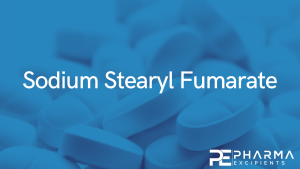Novel Esomeprazole Magnesium-Loaded Dual-Release Mini-Tablet Polycap: Formulation, Optimization, Characterization, and In Vivo Evaluation in Beagle Dogs

Esomeprazole magnesium (EMP) is a proton pump inhibitor (PPI) that reduces acid secretion. EMP has a short plasma half-life (approximately 1.3 h); hence, nocturnal acid breakthrough (NAB) frequently occurs, disturbing the patient’s nighttime comfort and sleep. We aimed to develop a novel esomeprazole magnesium-loaded dual-release mini-tablet polycap (DR polycap) with a prolonged onset time and improved bioavailability to prevent NAB. The formulation of the EPM mini-tablet core resulted in rapid drug release. The core was coated with an inner coating and an Eudragit® L30D-55 aqueous dispersion coating to prepare the first-release mini-tablet. In addition, the core was coated with an inner coating and an aqueous dispersion of Eudragit® S100 and Eudragit® L100 coating to prepare the second-release mini-tablet. Each mini-tablet type was characterized using an in vitro dissolution test and microscopic examination. After testing, 10 of each mini-tablets were placed together in hard capsules to form DR polycaps. The combination of mini-tablets was optimized via in vitro release testing and in vivo pharmacokinetic studies. The AUC0–24h of the DR polycap was similar to that of a comparable commercial product (Nexium®); Cmax was lower by approximately 50%, and Tmax was extended by approximately 1.7-fold. In conclusion, DR polycap is an alternative to commercial products with improved NAB and dosing compliance because of its dual-release characteristics.
Download the full article as a PDF here Novel Esomeprazole Magnesium-Loaded Daul-Release Mini-Tablet Polycap-Formulation, Optimization, Characterization, and In Vivo Evaluation in Beagle Dogs
or read it here
Materials
EMP was a gift from Lee Pharma Limited (Hyderabad, India). D-mannitol was provided by Roquette (Lesterem, Singapore). Low-substituted hydroxypropyl cellulose (L-HPC) and hypromellose (HPMC) 2910 were purchased from Shin-Etsu (Tokyo, Japan). Croscarmellose sodium (CMC-Na) was obtained from DuPont Nutrition (Newark, DE, USA). HPC L-type (HPC-L) was supplied by Nippon Soda Co., Ltd. (Tokyo, Japan). Sodium stearyl fumarate (SSF) was purchased from JRS Pharma (Polanco, Spain). Talc was purchased from Merck (Darmstadt, Germany). Triethyl citrate (TEC) was purchased from MORIMURA Bros., INC. (Tokyo, Japan). Glycerol monostearate (GMS) was obtained from Gattefosse (Saint-Priest, France). Polysorbate 80 was purchased from CRODA (Seraya, Singapore). Iron oxide red was obtained from VENATOR (Turin, Italy). ELD-55, ES-100, and EL-100 were obtained from Evonik Industries (Darmstadt, Germany). Hard capsules (HPMC) were obtained from SUHEUNG Co., Ltd. (Cheongju, Korea). A commercial product (Nexium® tablet; 40 mg) was purchased from AstraZeneca Korea Co. (Seoul, Korea). All other reagents were of reagent grade and used without further purification.
Kwon, T.K.; Kang, J.-H.; Na, S.-B.; Kim, J.H.; Kim, Y.-I.; Kim, D.-W.; Park, C.-W. Novel Esomeprazole Magnesium-Loaded Dual-Release Mini-Tablet Polycap: Formulation, Optimization, Characterization, and In Vivo Evaluation in Beagle Dogs. Pharmaceutics 2022, 14, 1411. https://doi.org/10.3390/pharmaceutics14071411
Read more on Sodium Stearyl Fumarate as a pharmaceutical excipient here:


